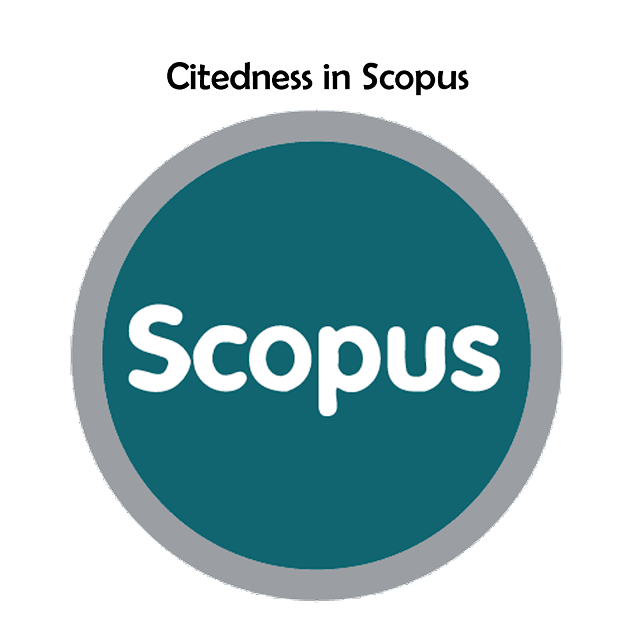Classification of Correlation Patterns Based on electrocardiogram Data of Heart Defects Using the Pearson Correlation Coefficient Method
Sumiati Sumiati(1*); Donny Fernando(2); Hamonangan Iman Hasoloan(3); Marlia Purnamasari(4);
(1) Universitas Serang Raya
(2) Universitas Serang Raya
(3) Universitas Serang Raya
(4) Universitas Serang Raya
(*) Corresponding Author
AbstractThis study was conducted to map the relationship between a symptom and the type of heart disease, based on the results of the electrocardiogram medical record data. The purpose of this study was to apply a symptom correlation pattern based on electrocardiogram data of heart abnormalities. Where the results of this study produce values that determine symptoms that have a very close relationship with the type of heart disorder, and make an analysis to diagnose normal and abnormal heart disorders using the Pearson Correlation Coefficient (PCC) approach. The results show that the relationship between symptoms has a very strong relationship. dominant with normal heart defects is the relationship between AV conduction duration and other symptoms because the relationship between AV conduction duration and other symptoms has a very strong average level of association. symptoms also have a strong average level of association, while the relationship between other symptoms appears to have a moderate relationship and does not even have any relationship with someone who is identified as having a heart abnormality diagnosis (abnormal) and normal heart KeywordsKeyword: electrocardiogram, pearson correlation coefficient, symptoms, diagnosis, heart disease
|
Full Text:PDF |
Article MetricsAbstract view: 406 timesPDF view: 170 times |
Digital Object Identifier https://doi.org/10.33096/ilkom.v16i1.1927.100-107 https://doi.org/10.33096/ilkom.v16i1.1927.100-107
|
Cite |
References
R. Tao, S. Zhang, X. Huang et al., “Magnetocardiography-based ischemic heart disease detection and localization using machine learning methods,” IEEE Transactions on Biomedical Engineering, vol. 66, no. 6, pp. 1658–1667, 2019.
S. Mohan, C. Thirumalai, and G. Srivastava, “Effective heart disease prediction using hybrid machine learning techniques,” IEEE Access, vol. 7, Article ID 81542, 2019.
F. I. Alarsan and M. Younes, “Analysis and classification of heart diseases using heartbeat features and machine learning algorithms,” Journal of Big Data, vol. 6, no. 1, p. 81, 2019.
F. Z. Abdeldjouad, M. Brahami, and N. Matta, “A hybrid approach for heart disease diagnosis and prediction using machine learning techniques,” in The Impact of Digital Technologies on Public Health in Developed and Developing Countries, M. Jmaiel, M. Mokhtari, B. Abdulrazak, H. Aloulou, and S. Kallel, Eds., Springer International Publishing, Manhattan, NY, USA, 2020.
R. C. Ripan, I. H. Sarker, S. M. M. Hossain et al., “A data-driven heart disease prediction model through K-means clustering-based anomaly detection,” SN Computer Science, vol. 2, no. 2, p. 112, 2021.
Sellappan Palaniappan, Rafiah Awang “Intelligent Heart Disease Prediction System Using Data Mining Techniques”Department of Information Technology Malaysia University of Science and Technology Block C, Kelana Square, Jalan SS7/26 Kelana Jaya, 47301 Petaling Jaya, Selangor, Malaysia.
Dr.Mohanraj, SubhaSuryaa, Sudha, Sarath Kumar, “Heart Disease Prediction using K Nearest Neighbour and K Means Clustering”, International Journal of Advanced Engineering Research and Science (IJAERS) 2016.
Shinde, R., Arjun, S., Patil, P., & Waghmare, J. (2015). An Intelligent Heart Disease Prediction System Using K-Means Clustering and Naïve Bayes Algorithm. IJCSIT) International Journal of Computer Science and Information Technologies, 6(1), 637-639.
Mrs.G.Subbalakshmi, “Decision Support in Heart Disease Prediction System using Naive Bayes”, Indian Journal of Computer Science and Engineering.
R. Bhuvaneswari and K. Kalaiselvi, Naive Bayesian Classification Approach in Healthcare Applications International Journal of Computer Science and Telecommunications, [Volume 3, Issue 1, January 2012].
Raihan M, Mondal S, More A, Boni P K, and Sagor M O F 2017 Smartphone Based Heart Attack Risk Prediction System with Statistical Analysis and Data Mining Approaches Advances in Science, Technology and Engineering Systems Journal 2 No 3 pp 1815-1822.
Tb A Munandar, S Sumiati,and V Rosalina” Pattern of symptom correlation on type of heart disease using approach of pearson correlation coefficient” IOP Conf. Series: Materials Science and Engineering 830 (2020) 022086 IOP Publishing doi:10.1088/1757-899X/830/2/022086.
Sonali, B. M. and Priyanka, W., (2014), Research Paper on Basic of Artificial Neural Network, International Journal on Recent and Innovation Trends in Computing and Communication, 2(1),96-100.
Amato,F., López,A., María,E., Méndez,P., Vaňhara,P., Hampl,A., Havel,J.,(2013). Artificial neural networks in medical diagnosis, Journal of APPLIED BIOMEDICINE, 11,47-58.
Gharehchopogh,F.S., Khalifelu, Z.A., (2011),” Neural Network Application in Diagnosis of Patient: A Case Study”, International Conference on Computer Networks and Information Technology , 245 – 249, http://dx.doi.org/10.1109/ICCNIT.2011.6020937 .
Koushal, K., (2012). Artificial Neural Networks for Diagnosis of Kidney Stones Disease. I.J. Information Technology and Computer Science, 7(3), 20-25.
V. Krishnaiah, G. Narsimha, N.S. Chandra, Heart disease prediction system using data mining techniques and intelligent fuzzy approach: a review. Int. J. Comput. Appl. 136(2), 43–51 (2016)
P.K. Anooj, Clinical decision support system: risk level prediction of heart disease using weighted fuzzy rules. J. King Saud Univ. Comput. Inf. Sci. 24(1), 27–40 (2012).
D. Pal, K.M. Mandana, S. Pal, D. Sarkar, C. Chakraborty, Fuzzy expert system approach for coronary artery disease screening using clinical parameters. Knowl. Based Syst. 36, 162–174 (2012).
V. Khatibi, G.A. Montazer, A fuzzy-evidential hybrid inference engine for coronary heart disease risk assessment. Expert Syst. Appl. 37(12), 8536–8542 (2010).
Refbacks
- There are currently no refbacks.
Copyright (c) 2024 Sumiati, Donny Fernando, Viktor Vekky Ronald Repi, Hamonangan Iman Hasoloan, Marlia Purnamasari

This work is licensed under a Creative Commons Attribution-ShareAlike 4.0 International License.







